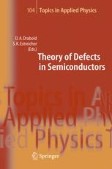Search
Search Results
-
NACO and PUEO-GriF Investigating Small Scale Structures and Velocity Fields in OMC1
Infrared observations of the OMC1 star forming region obtained at the CFHT and at the ESO VLT, both in imaging mode with adaptive optics, are...
-
Lyot Coronagraphy at the Palomar and Phase-Mask Coronagraphy at the VLT
In this paper, we report on observations of faint companions and circumstellar disks at the Palomar 200-inch telescope. As a result, we present...
-
NACO-SDI: A Novel Simultaneous Differential Imager for the Direct Imaging of Giant Extra-Solar Planets
Young (100 Myr old) extra-solar planets are 100000 times more self-luminous than old (5 Gyr) extra-solar planets, whereas their primary stars are...
-
AO-Assisted Observations of Ultra-Compact H II Regions
High-spatial resolution observations in the near-infrared (NIR) with Adaptive Optics (AO) represent a powerful tool to investigate massive star...
-
Near-Infrared High Resolution Spectroscopy of High-z QSO Absorption Systems with the Subaru Adaptive Optics System
We are conducting a near-infrared (1.0–1.35 μm) high resolution spectroscopic survey of high-z QSOs to study the QSO absorption systems at high...
-
Discrete Dissipative Solitons
The existence of discrete dissipative solitons in a nonlinear lattice is studied. The Ablowitz-Ladik (AL) model with linear dam**, nonlinear cubic...
-
Empirical Molecular Dynamics: Possibilities, Requirements, and Limitations
Classical molecular dynamics enables atomistic structure simulations of nanoscopic systems to be made. The method is extremely powerful in solving...
-
Light Induced Effects in Amorphous and Glassy Solids
In this Chapter, we discuss how exposure to light can affect the properties of disordered materials and review our recent computational studies of...
-
Multiscale Modeling of Defectsin Semiconductors:A Novel Molecular-Dynamics Scheme
Now that the modeling of simple semiconductor systems has become reliable, accurate and routine, attention is focusing on larger scale, more complex...
-
Defect Theory: An Armchair History
This introductory chapter begins with a summary of the developments of the theory of defects in semiconductors in the past 50 years. This is followed...
-
Dynamical Matrices and Free Energies
The calculation of the entire dynamical matrix of a periodic supercell (containing a defect or not) provides several most useful pieces of...
-
Supercell Methods for Defect Calculations
Periodic boundary conditions enable fast density-functional-based calculations for defects and their complexes in semiconductors. Such calculations...
-
Defects in Amorphous Semiconductors: Amorphous Silicon
Defects in disordered (amorphous) semiconductors are discussed, with an emphasis on hydrogenated amorphous silicon. The general differences between...
-
Quasiparticle Calculations for Point Defects at Semiconductor Surfaces
We present a quantitative parameter-free method for calculating defect states and charge-transition levels of point defects in semiconductors. It...
-

-
Ultrashort Pulse Lasers and Amplifiers Based on Nd:YVO4 and Yb:YAG Bulk Crystals
This Chapter focuses on the generation of ultrashort pulses and their amplification to high energies in Nd:YVO4 and Yb:YAG bulk crystals....
-
Ophthalmic Applications
Femtosecond photodisruption opens new pathways in refractive surgery due to its precise interaction mechanism with biological tissue. The quality of...
-
Monolithic Silicon Light Sources
Monolithic silicon light sources (LEDs and lasers) could have a significant impact when integrated on silicon chips. After a general introduction to...
-
Monolithic Silicon Microphotonics
The technology evolution of optical interconnection is driven by the distance × product required for a given link. As such optical fiber deployment...
-
Silicon Fundamentals for Photonics Applications
The many and diverse approaches to materials science problems have greatly enhanced our ability to engineer the physical properties of...
